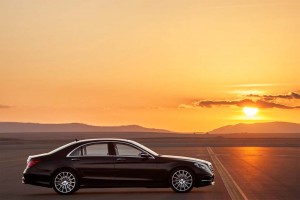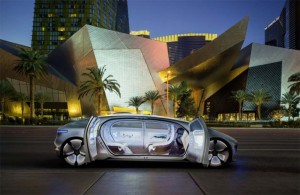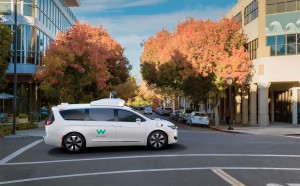Mercedes-Benz is teaming up with German mega-supplier Bosch to launch a new ride-sharing service in Silicon Valley next year that will rely on self-driving vehicles.
The project marks the latest entry into the fast-expanding field that, by some estimates, could eventually account for as much as a quarter or more of the miles Americans travel by automobile. Other planning to launch ride-sharing services using self-driving vehicles include General Motors, Google spin-off Waymo and Uber, the country’s largest ride-sharing service.
While Mercedes’ parent Daimler AG is referring to the vehicles it will use as “automated shuttle(s),” customers will be able to ride in style. When the project initially gets underway during the second half of 2019, it will rely on modified versions of the luxurious S-Class Sedan. Eventually, the goal is to switch to a production version of the edgy Mercedes concept vehicle, the F 015.
(Bill to expand national autonomous vehicle testing stalled in Senate. Click Here for the latest.)
Starting out, there will be a human “operator” aboard to ensure there are no problems if there are technical glitches. The plan to migrate to the F 015, however, would suggest that Mercedes eventually intends to go completely driverless. The concept version, unveiled three years ago, has a living room-like interior in which the seats can fully swivel to allow everyone onboard to face one another.
Going driverless has numerous advantages. Not only would it allow a ride-sharing service to offer lounge-like vehicles but it would also slash the cost of operating such services. A study released late last year by the Boston Consulting Group estimated that current ride-sharing services like Uber spend about $1.60 a mile, or nearly double what operating costs are for the owner of a comparable, private vehicle. By using vehicles 24/7 and pulling the driver out from behind the wheel, however, ride-sharing companies could make it significantly cheaper to hail a ride and abandon personal ownership.
The price should be particularly appealing when the Daimler/Bosch project launches next year, the partners planning to offer rides for free on “selected routes” through Silicon Valley, according to Daimler’s autonomous vehicle director, Uwe Keller.
(Three quarters of Americans “too afraid” to ride in self-driving vehicles. Click Here for the story.)
Waymo has similarly offered free rides to those willing to participate in the pilot project it has been running in the Phoenix area. The Alphabet subsidiary received permission from Arizona regulators earlier this year to transform that pilot into a commercial operation which Waymo plans to launch before the end of 2018.
The service has plans to expand to other markets around the country, Waymo CEO John Krafcik told TheDetroitBureau.com in March, though details have yet to be released. The company has been running a small fleet of modified Chrysler Pacifica Hybrid minivans and in June announced it will add about 60,000 more over the next few years as the ride-sharing service rolls out nationwide. Waymo has also inked a deal to acquire about 20,000 Jaguar I-Pace electric SUVs.
Daimler and Bosch have not said how many vehicles will be used in the pilot project, and they are still negotiating with regulators in the Silicon Valley area before locking down where the service will operate.
Though slow to push into the autonomous space, Daimler has been ramping up its efforts, in part, by partnering with tech and auto parts giant Bosch. “Hardly any company can meet this challenge alone,” says explained Keller.
While some manufacturers have decided to form alliances – Chrysler, for one, is working with Waymo on autonomous technology it might soon offer to retail customers – others are trying to do it all in-house. General Motors spent $1 billion in 2016 to acquire Cruise Automation, a San Francisco start-up specializing in autonomous technology.
GM has offered few details about its own autonomous ride-sharing plans other than to say it will debut in 2019 and will, at least initially, rely on Cruise-modified versions of the all-electric Chevrolet Bolt.
The first autonomous ride-sharing vehicles will continue to use humans as backup drivers to step in when there’s a problem. But Uber learned the hard way that doesn’t always ensure safety. In March, one of its own self-driving prototypes struck and killed a pedestrian in the Phoenix suburb of Mesa. The vehicle’s sensors failed to respond when a collision became likely and the human operator, who was watching a video on a smartphone, failed to intervene in time.
(Click Here for the latest on the fatal Uber crash.)

The Tempe (Arizona) Police Department released the video footage of Uber's collision with a pedestrian.
“The most urgent and difficult work is to develop a system which will work reliably, safely, daytime and nighttime under all circumstances and conditions,” said Michael Fausten, the director of urban autonomous driving for Bosch.
Even when ride-sharing services begin rolling out fully driverless vehicles they are expected to be “geo-fenced,” meaning they will only operate in select areas, and they may not operate in all weather conditions, either.
Precisely when it will be possible to operate anywhere, at any time, and under all conditions, is a matter of debate. Some experts believe that what is referred to as Level 5 technology might not be available for another decade or more.



